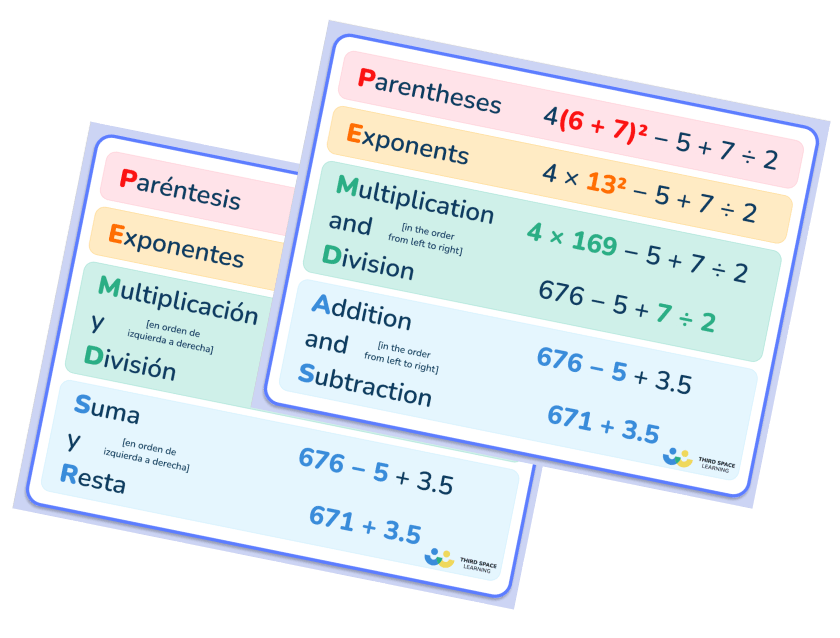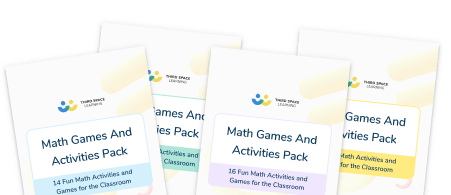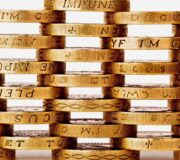Math Homework Guide For Helping Kids With Math At Home
While the amount and difficulty of math homework that your child will receive will vary from school to school, one thing is common to all parents: you will at some point be asked to help your child with math homework.
This blog is part of our series of blogs designed for teachers, schools and parents supporting home learning.
Depending on your age, how recently you were taught elementary school math, and your own attitude toward learning math, you may face that moment with a level head or with a rising sense of panic.
Much of today’s math may at first glance seem unfamiliar to you – math curriculums have changed quite a lot in the last 5-10 years, never mind the last 20 – and elementary school children today in every grade are expected to do more and demonstrate greater understanding than in many previous years.
If you feel like you’re more in the ‘panic’ than relaxed camp, you’re not alone. Hundreds of thousands of parents across the country feel the same way!
As experts in math tutoring, we’re on hand to support you to support your children!
The research shows that input from carers and parents is the key factor in determining good outcomes at elementary school.
However, we also understand that when you’re busy juggling the needs of your children, yourself, and completing the 1001 other daily tasks that come with being a parent, planning a math lesson is the last thing you feel like doing.
So in this article we aim to give you the key information about what elementary school math now entails, some math homework activities suitable for each grade, and lots of links to more worksheets, workbooks, and more.
Fun Math Games and Activities Packs for Kindergarten to 5th Grade
Individual packs for Kindergarten to Grade 5 containing fun math games and activities to complete independently or with a partner.
Download Free Now!- The move to math mastery
- Math in your child’s elementary school
- How to help with 1st grade math (6-7 year olds)
- How to help with 2nd grade math (7-8 year olds)
- How to help with 3rd grade math (8-9 year olds)
- How to help with 4th grade math (9-10 year olds)
- How to help with 5th grade math (10-11 year olds)
- How to help with 5th grade math – state assessments (10-11 year olds)
- How to help with 6th grade math (11-12 year olds)
- Final thoughts on math at home
The move to math mastery
Recently, math curriculums have placed an emphasis on mastery, fluency, and problem-solving in math.
In a nutshell, the onus is on a deep understanding of mathematical concepts, rather than learning strategies and facts off by heart, and this is something to bear in mind as you look to help your child with math throughout elementary school.
Approaches like concrete-representational-abstract, open up the inner workings of mathematical concepts and allow us to really take a look at what we’re doing with numbers.
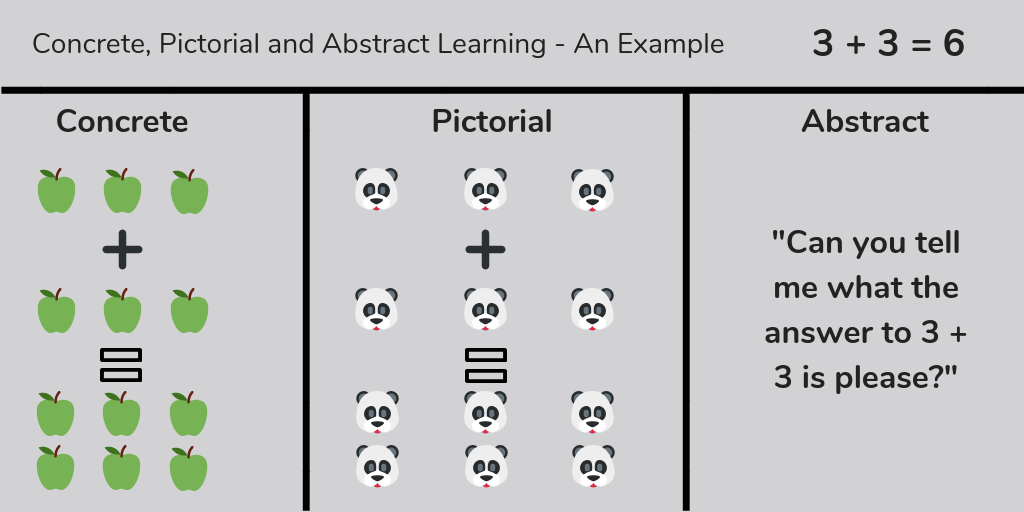
Studies have shown that by using concrete math resources in the first phase of learning, children are more able to understand representational images (like pictograms or bar models) in the second phase of learning.
These two steps make the abstract phase of learning (when there are only numbers involved) seem like a completely natural progression.
Using these steps is a great way to help your child understand the way that math applies to the real world, and it means that they will be well-equipped to deal with all sorts of mathematical conundrums.

Meet Skye, the voice-based AI tutor making math success possible for every student.
Built by teachers and math experts, Skye uses the same pedagogy, curriculum and lesson structure as our traditional tutoring.
But, with more flexibility and a low cost, schools can scale online math tutoring to support every student who needs it.
Find out more
Math in your child’s elementary school
Once you know about the standards your state follows and where some of these more ‘modern’ math concepts come from, the key thing to know as a parent is how your own elementary school is implementing these standards.
This will help you understand exactly what it is that your child needs to know for math at each point of their elementary school life.
The main elements you should get on top of are as follows:
- The state standards or scheme of work your school is following
- Your school’s home learning or homework policy
- Key curriculum terminology that may be new to you
1. Your school’s math curriculum
Most schools now publish on their website the math topics that children will be studying each year and each term. They may refer to this as their scheme of work or their curriculum. There are lots of different ways schools teach these topics but Eureka Math is one of the most popular curricula and one you may hear about a lot!
This is an invaluable resource for you as a parent as it means you can make sure that you’re supporting them with the right homework help at the right time. If your child hasn’t completed their place value module this semester, it will make it harder for them to do multiplication x 100 or work with decimals as an example.
2. Your school’s home learning or homework policy
Before Covid-19 times, home learning in a school context was generally just used to refer to the ‘added extras’; the stuff relevant to your school’s math curriculum that you could do to support it.
While in subjects like Geography and History it might suggest museums or websites to visit, in math it was more likely to be focused on recall of number facts and multiplication facts, and occasional homework sheets.
Now of course home learning incorporates so much more to it than just ‘homework.’ However, your school will have a policy on what it expects or wants families to do for math homework in addition to ordinary lessons and it’s worth taking a look at this before worrying that your child has too much or too little math homework.
Read more: The homework debate in elementary schools
3. Important terminology in elementary math
Even if you have a great working relationship with your child’s class teacher, some of the jargon used in schools can be almost indecipherable.
Here are just some of the more esoteric and unexpected key terms that teachers may use when talking about math:
| Mastery | A deep understanding of mathematical concepts (and not just memorizing strategies). |
| CRA approach | Linked to the mastery approach, the CRA approach is split into three phases of learning: Concrete (real-life examples), Representation (representations of real life), and Abstract (numbers and formal written strategies). |
| Variation | Understanding math deeply by looking at different procedures and concepts. |
| Metacognition | Metacognition literally means ‘thinking about thinking’; in math, it means you are aware of the choices you make when solving a problem. |
But don’t worry. We’ve created a free math dictionary for kids and parents that includes all these terms and more. Head over there whenever you encounter a word whose meaning is unclear.
Now we have run through the key things you need to know about what your child is learning in math at school, we can move onto how you can help them with their math homework!
How to help with 1st grade math (6-7 year olds)
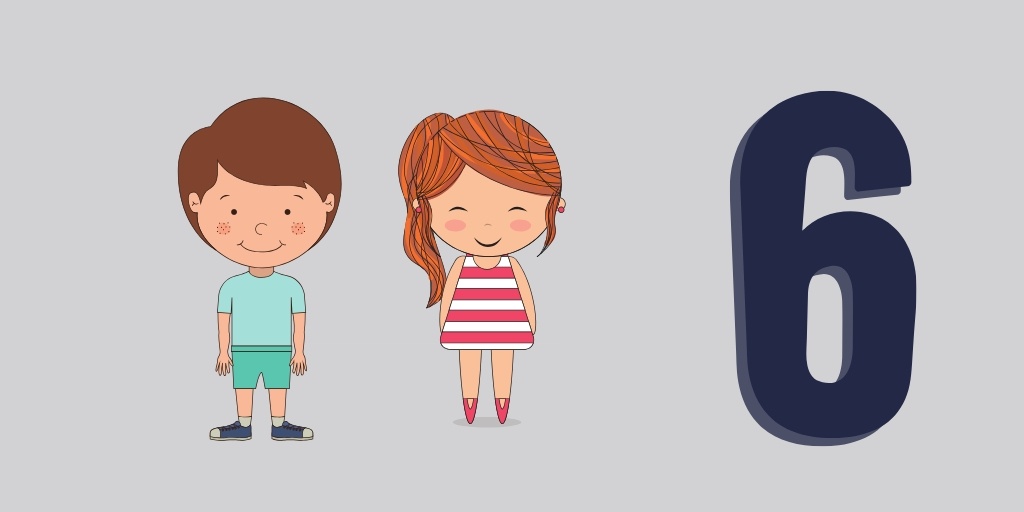
While kindergarten might have introduced many new ideas and a very different way of learning than preschool, 1st grade is when your child will be tested on how well they’ve actually understood what they’ve learned.
Here are some quick tips you can use to help your child feel prepared for the challenges ahead of them.
Math tip 1: Check their understanding of the basics
Moving into 1st grade, there are some basic math concepts children should feel comfortable with. The key topics to check are:
- Does your child know how to count to 100?
- Can your child write numbers from 0 to 20?
- Can you child answer “how many?” questions about groups of objects?
- Can your child count up starting at any given number?
- Can your child solve basic addition and subtraction problems?
- Can your child understand the numbers 11-19 as a ten plus some ones?
- Can your child name basic 2D and 3D shapes?
If your child is struggling with any of these, they’ll probably find parts of what they learn in 1st grade that much harder. Luckily, you can find ways to help them practice these in our dedicated 1st grade math page.
Math tip 2: Work on helping your child recognize number bonds
Number bonds are pairs of numbers that add up to certain totals e.g. 3 + 7 = 10. A good understanding of number bonds is important for nearly every part of math your child will learn and an important building block to develop number sense, so it’s crucial they feel comfortable with them.
The most important number bonds are those that add up to 10. Look at the example below:
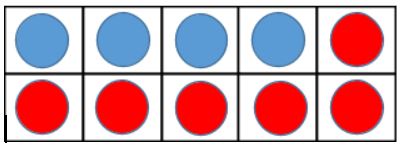
Children should understand the relationship between 4, 6 and 10 and the different ways these three numbers can interact. So they should understand that 4 + 6 = 10 is the same as 6 + 4 = 10, and that 10 – 6 = 4 or 10 – 4 = 6 are the reverse.
Once your child is happy with numbers bonds up to 10, you will want to move on to number bonds up to 20. These are slightly more complex, and need a basic knowledge of place value as well.
For example, the expression 9 + 5 can be reformulated as 10 + 4, but this is much easier to do if your child understands that 9 is close to 10 and 4 is close to 5.
Read more
- 1st Grade Math: Home Learning Toolkit for 6 and 7 Year Olds
How to help with 2nd grade math (7-8 year olds)

It’s likely that your 7-year-old will encounter many concepts that are new to them during their 2nd grade math lessons, and this can be a daunting time for some young children.
New ideas, coupled with the higher expectations of accuracy in their answers can be a shock to the system for some 2nd graders, so here are a few quick tricks that will help your child get over any mathematical shaped obstacles swiftly and smoothly.
Math tip 1: Cultivate accuracy as a habit in 2nd grade
An easy way to work on cultivating accuracy is by getting your child to measure anything and everything with a ruler or a tape measure. This is a good way for you to ensure that your child is giving accurate answers to questions, without the questions themselves being too difficult.
For example, a quick measuring activity that helps promote accuracy in answers could be as simple as this:
Mom: “So Sophie, can you tell me how many centimeters long my cell phone is?”
Sophie (using a ruler/tape measure): “I think it’s about 7cm long.”
Mom: “You’re right it is roughly 7cm long, but can you tell me exactly how long it is?”
Sophie: “It is 7.4cm long.”
Mom: “It is! Well done.”
This may be a simple example, but it shows you just how easy it can be to implement real-life math into your daily life in a useful way.
There are lots of ways you can make it fun, whether that be by measuring each other’s height, recording how much a plant grows each day or even seeing how long the pet dog’s tail is. The possibilities are endless here!
Cultivate a habit of accuracy early on, and this will be reflected across your child’s learning for the remainder of their school life (and not just in math).
Math tip 2: Work with equal groups of objects to gain foundations for multiplication
In 3rd grade, students will dive deep into multiplication, so it’s important for 2nd graders to begin setting a foundation for understanding the concept.
Second graders should already be proficient in skip counting by 2s, 5s, and 10s, so take it a step further by asking them to skip count by 3s, 4s, or any other number (up to 12). This will familiarize them with the numbers they will see in the times tables.
Another way to help set a foundation for multiplication is to ask your child to organize objects into rows and columns to make an array. You could even practice during snack time at home, using food like crackers or M&Ms to organize into an array.
Add in the mathematical element by asking them to use addition to determine the total number of objects in the array. (Add up the number in each column or add up the number in each row.) They can also be asked to write an equation to represent the total.
Math tip 3: Challenging your 2nd grade child with math at home
Up until this point, your 7-year-old will be used to using one operation (adding or subtracting) at a time.
Challenge them by mixing it up!
Ask your child to mentally add up the things you buy on a shopping trip. Every now and then, put something back to keep the subtraction practice going.
One of the most important things to do at this stage is to try and incorporate math into everyday life in fun and engaging ways, and this is just one of the ways you can do so!
Another favorite way is to incorporate some of these math games into family life at home. There are loads to choose from, indoor, outdoor or even in the car!
Read more
- 2nd Grade Math: Home Learning Toolkit for 7 and 8 Year Olds
How to help with 3rd grade math (8-9 year olds)

At this age, it’s useful to introduce a couple of new concepts that, while it is important to ensure they are not too difficult, can be a little confusing at first.
At this point in elementary school your child will be dealing with large numbers and more complex operations. This might seem daunting, there’s plenty you can do to get over these hurdles at home.
Math tip 1: Use written strategies to add and subtract large numbers
If you’re shopping online, enlist your 8 year old to help you. Tell them exactly what’s on your wish list (and don’t be afraid to push the boat out). Once your child has a list of items and prices, work together using written addition to find the total.

This is your chance to really splash the (metaphorical) cash, so if you’ve had your eye on that $1,000 sofa or the $2,300 TV, now is the time to add it to your shopping list! Just make sure hands stay well away from that “buy now button”….
Math tip 2: Help them get started with division and multiplication
Your child may have learned the very basics of multiplication, but it is covered much more heavily in 3rd grade, and division is introduced for the first time.
Rather than just getting your child to memorize the multiplication facts, support their learning by helping them see multiplication and division in more simple terms.
One of the simplest ways to look at multiplying is repeated addition. 5 x 2 can be seen as 2 lots of 5 (or 5 + 5). Equally, 2 x 5 can be seen as 5 lots of 2 (or 2 + 2 + 2 + 2 + 2.) Develop this understanding by showing this using objects:

Division can be explained in terms of grouping and sharing. Grouping involves seeing an expression such as 10 ÷ 2 as, “How many groups of 2 can be made from 10?”

While sharing involves seeing 10 ÷ 2 as, “If I share 10 into 2 equal groups, how many are in each group?”

Math tip 3: Practice multiplication facts every day with your 3rd grader
The more you practice, the better. Sing it, shout it, whisper it, dance it. Whatever it takes!
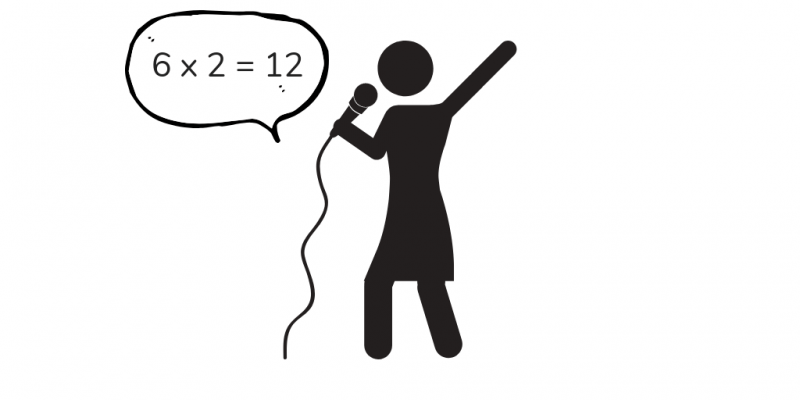
Although it might not seem like the most entertaining math in the world, a solid knowledge of your multiplication facts removes barriers to more complex math further down the line.
Multiplication facts play a huge role in everyday life, with many of us taking them for granted. For example, if you are shopping and see that pineapples are $2.00 each and you know that you require 3 of them, you have no problem working out that this will come to a total of $6.00.
At 8 years old your child might not be able to work that out just yet, and that is why it is so important for them to cement their multiplication fact knowledge as early as possible.
Math tip 4: Challenge your 3rd grader with some fractions!
One way to really ramp up the difficulty level is by getting fractions involved. They may not be anyone’s favorite part of math, but you should not underestimate their importance both in and out of the classroom.
Ordering fractions can be a challenge for even the strongest mathematicians at this age, so try ordering tenths first before moving onto other fractions like quarters, halves and thirds.
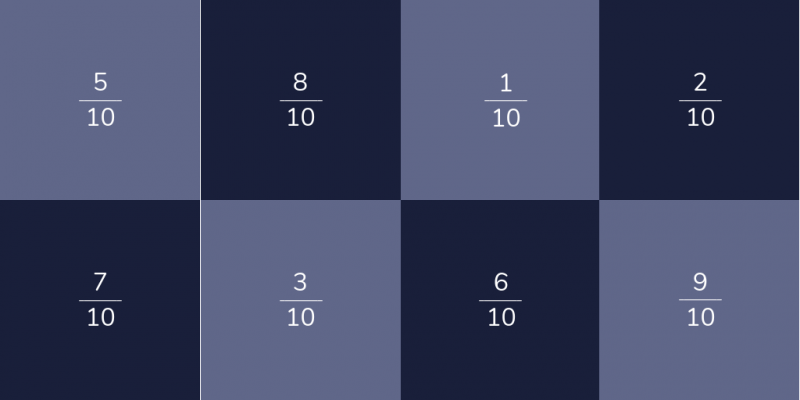
You can make this more fun by creating a simple clothesline and pegging fraction cards to it. Adding a time limit to activities such as this can also help your child to engage with the task, so why not give them the challenge of ordering all of the tenth fractions in under a minute?
Read more
- 3rd Grade Math: Home Learning Toolkit for 8 and 9 Year Olds
How to help with 4th grade math (9-10 year olds)

This is the age when knowledge retention really begins to come to the fore, and if you spend just five minutes a day revisiting a few fundamental skills, you’ll find that your child can take on new ideas effortlessly. In particular, familiarizing your child with angles, and continuing to practice multiplication facts (up to twelve) will stand them in good stead in the future.
Math tip 1: Get the protractor out (whenever you can)
Protractors have a funny way of muddling most young mathematicians, and it certainly doesn’t help that there are two rows of numbers to contend with!
That being said, it is a crucial part of a mathematician’s pencil case, so try to have one on hand and use it wherever possible to measure angles accurately. This is a great way to make an otherwise dull trip to the home improvement store for your child exciting, as they help you to measure the all-important angles on everything from tins of paint through to planks of wood.
Bringing in active math such as this can be a great way to cement learning, and you should find that your child is much more engaged with the topic as a result too!
Math tip 2: Get your 9-year-old to read the time, all the time!
Telling and writing time is a skill mastered in 3rd grade, but it is one that can be quickly forgotten without practice. Time may go quickly for us adults, but for kids who have grown up predominantly reading the time on phone screens and tablets, analog clocks look like something from another planet.
You can avoid the confusion by hanging analog clocks in your home from an early age and modeling reading the time out loud at every opportunity. Practice makes perfect when it comes to telling time, so be patient and keep at it.
Try to remember to ask your child what the time is every time you take a glance up at the clock, as not only will this be a good chance to help them learn how to tell the time, but it might just remind you to get the dinner out of the oven too!
Math tip 3: Challenge your 4th grader with math at home
Weather permitting, take a walk down to your local bus stop or if the rain is proving too potent, browse train timetables online. (Bonus points if it’s a timetable that really applies to your commute or a regular journey!)

Challenge your 9-year-old to work out the difference in time between stops on the route.
Can they find the shortest stop?
The longest one?
How long does the whole route take?
Not only is reading timetables interesting, but it’s also a skill that could be useful in later life. They will have no excuses for missing the bus to high school if they have been taught how to read timetables properly!
If riding a bus is not common for you or your child, you can also look at an online map and calculate how long the commute takes in your car to various places around your town.
Read more
- 4th Grade Math: Home Learning Toolkit for 9 and 10 Year Olds
How to help with 5th grade math (10-11 year olds)

At this age, it’s worth having conversations around what your child finds difficult and easy in math.
Everyone struggles with math at some point, but if you can ask for help, you’re much more likely to succeed. With the introduction of several completely new topics, now is the time to work through any misunderstandings and avoid them building up into a bigger issue.
Math tip 1: De-mystify the relationship between fractions and decimals
The relationship between fractions and decimals is one that puzzles many 10-year-olds (and in fact, a lot of adults too!).
When children first encounter fractions at school, there’s no mention of decimals, so it’s no surprise that it comes as a bit of a shock later on. The important thing to remember is that fractions and decimals are just two different ways of showing part of a whole.
One tried and tested technique that is used by teachers and parents across the land is to bring many children’s favorite food, the trusty pizza, into the mix here. If you are splitting the pizza into four, why not ask the question of how much each person is getting as a fraction and a decimal?
By being able to visualize the mathematics taking place in front of them, children are better equipped to work out the answer, and of course, they get some pizza too! This is a fantastic way to help your child with math at home.
Math tip 2: Challenge your 5th grader with math at home
At this age, the curriculum offers plenty of challenges for 10-year-olds.
Being able to recall equivalent fractions and decimals will stand your child in good stead, and if you are looking to challenge your child then these are the topics you should do it with.
Quick quizzes on converting decimals into their equivalent fractions are a good way to encourage learning on these topics, and you can easily incorporate them into everyday life. Examples could include:
- I’ve filled this glass of water up ½ to the top. How much room is left in it as a decimal?
- We’ve walked 0.25 of the way to school. How far is that as a fraction?
- ⅕ of your dinner is made up of vegetables, how much is this in decimal form?
There will be a lot of other examples that come up in your everyday life, but these ones are just there to inspire you!
If you’re searching for something to accompany the real life math, take a look at our blog which tackles how you can tackle 5th grade math in greater detail.
How to help with 5th grade math – state assessments (10-11 year olds)

Fifth grade is typically a grade level where students will have state assessments across multiple content areas at the end of the year. With these assessments looming, it can feel like a mad dash to the finish line, but you have to remember one simple thing…
Don’t panic!
Just remember that there’s plenty that you can do in a short amount of time to boost your child’s confidence in math.
Begin by taking a look at practice test papers together as this is one of the best ways for both of you to find out which math problems your child finds easy and which ones need a bit of work. It also helps to break word problems down step-by-step to scaffold your child’s understanding of math questions.
Bear in mind that it is normal for children to react differently to test papers than to the work they see day-to-day, so try to build a positive experience around tests to relieve the pressure (the promise of a trip to the park after completing a sample test is a good way of doing this).
Math tip 1: Practice taking tests the fun way
The best way to get your child on board with practice test papers is to take them together.
Don’t worry about getting the answers wrong – by showing your child that mistakes are the first step in plugging knowledge gaps and growing, you’re teaching them to be more resilient in the face of a challenge.
The best part?
You can ask them to teach you how to correct your mistakes, which will help to consolidate their own learning in the process.
If you don’t have the time to sit and take the whole test, you can do one question a day together for a strong, steady build-up of skills. Slow and steady definitely wins the race.
Math tip 2: Never neglect the basics!
A common mistake is to focus on the plethora of new concepts, leaving basic skills like mental arithmetic to stagnate.
Strong foundations in basic math make the harder stuff more accessible; if you’re getting nowhere with the tough questions, go back to the basics.
A good grasp of place value, multiplication facts and mental arithmetic will help when you revisit those difficult questions later on.
Math tip 3: Challenging your 5th grader with math at home
Once your 11-year-old has the basics down and feels confident with exam technique, you can stretch their learning by introducing pre-algebra.
Confident mathematicians will enjoy the novelty and challenge of working out what the letters mean in simple equations. Keep things simple to begin with and work your way up to more difficult equations in the future. Examples of some equations you could start with include:
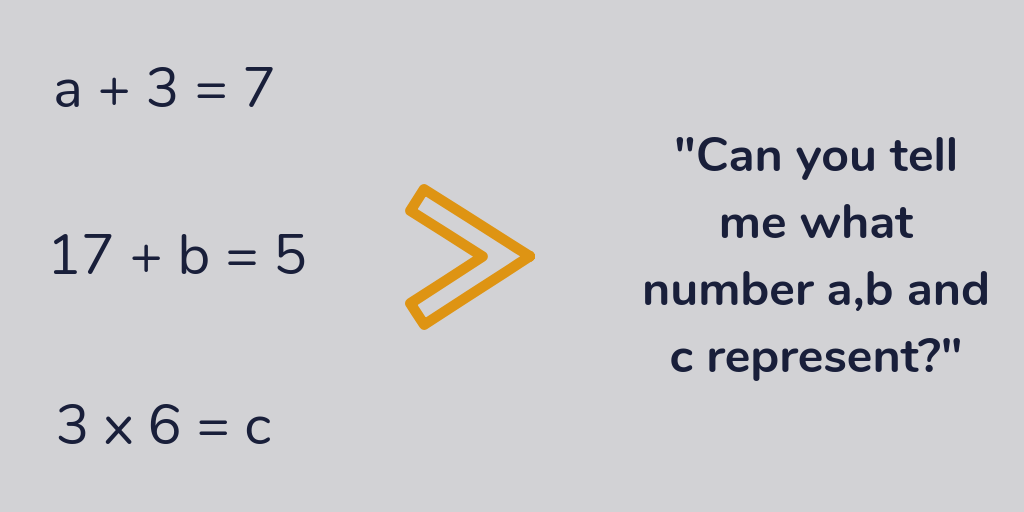
Equations are never high on most children’s to-do lists, but they do become increasingly important as school life goes on, so beginning to secure this knowledge at an early age is only ever beneficial.
Read more
5th Grade Math: Home Learning Toolkit for 10 and 11 Year Olds
How to help with 6th grade math (11-12 year olds)
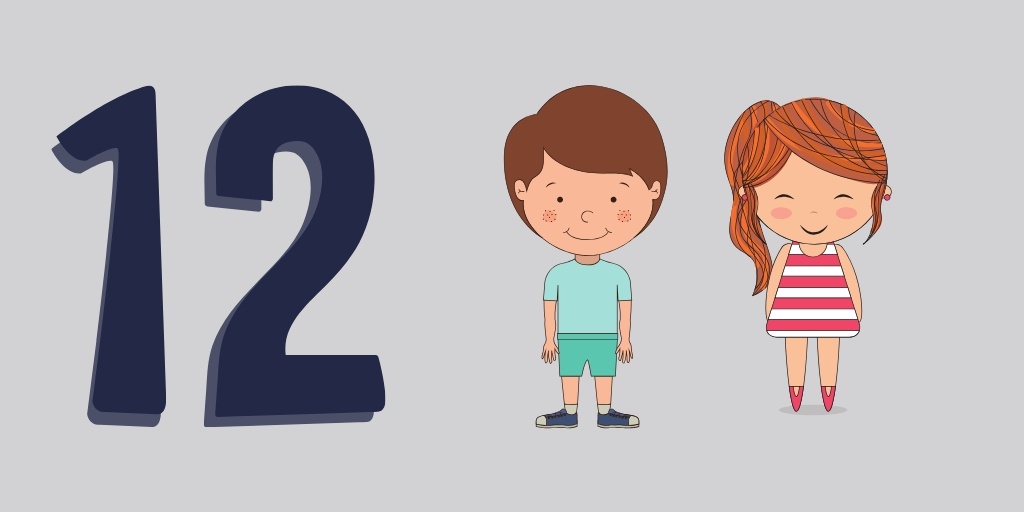
With a new school, new friends, and new subjects all to deal with, kids can feel overwhelmed with the start of 6th grade before they even start! While it might be tempting to try and help with subjects like math by finding ways to ‘get ahead’, the best support you can offer is to make math seem less scary to your child.
Math tip 1: Make math a ‘normal’ part of life
As adults, we use math in our day-to-day lives without really thinking about it. Sometimes it doesn’t even seem like math to us, because we’ve become so used to it.
Your child won’t have that kind of context yet – to them math is still just a bunch of facts that aren’t related to real life.
Luckily, the fact that we use math all the time makes it very easy to give your child that context: get them involved in activities like shopping, cooking, working out holiday budgets; anywhere you realize you use math, get your child involved!
Math tip 2: Take time to ‘review’ the day with your child
Some of you might already automatically ask your child how their day was when they get home – and your child might reply with a one word answer, if they reply at all!
But if you take this just a little bit further, you can actually help your child strengthen the memories of what they learned that day. Your child might start by talking about things that happened with friends, or ‘funny’ bits of lessons (which we call ‘episodic’ memories).
At this point, asking something like “What were you supposed to be learning about when X happened?” will help your child remember that topic – and as they talk about it, they’ll be making that memory stronger in their minds.
It’s important not to ignore the ‘off-topic’ stuff, or try and get around it – these stories are important to your child, and listening to them shows you’re really interested in what happened to them at school.
Math tip 3: Help your child develop a Growth Mindset
A Growth Mindset is a way of looking at work. Instead of saying “I can’t do this” when they run into an especially hard problem, someone with a growth mindset will say “I can’t do this yet, but I can learn to.” It’s developing your child into young learners!
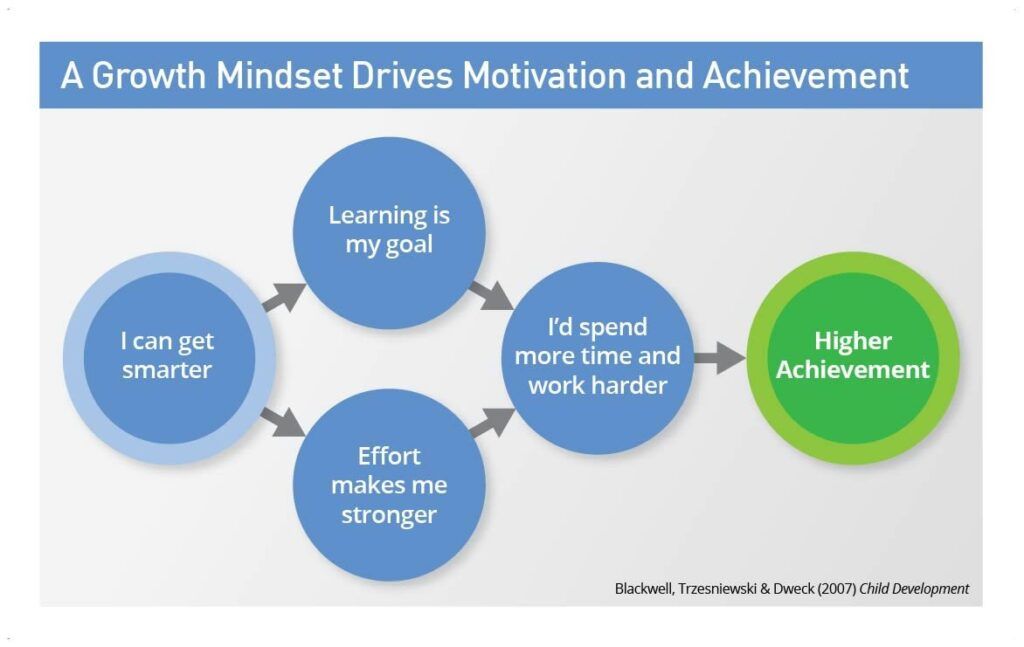
Your child may already be learning about Growth Mindset in school – it is very popular with teachers – but how you speak at home will also have an impact.
Many of us struggle with the kind of math your child will be starting to learn in 6th grade, and it’s a very natural reaction to say “I wasn’t very good at math when I was your age.”
You might mean that your child is much better at it than you are, but that’s not what they hear; you’ve managed to make it to adulthood apparently being “not very good” at math – if that’s the case, why should they bother trying?
You can encourage your child to develop a growth mindset by using phrases like “You’re working very hard on that”, “I’m sure I learned this but I’ve forgotten, can we both look at it?” and “I’m sure you can get this if you keep going” instead.
Final thoughts on math at home
To summarize, if you find yourself wondering ‘how can I help my child with math homework?’, the simple answer is to work in stages depending on the level your child is at.
1. Early stages of math
If they are in the early stages of their mathematical journey in any single concept then you should help them by using concrete manipulatives to help them visualize the problem.
- Is your child struggling to work out what half of 12 is? 12 pieces of pasta on the kitchen table could help solve this.
- Do centimeters and inches prove problematic? Using a ruler to measure their favorite toys can help here.
The use of concrete resources is only limited by your imagination and there are hundreds of examples to be found all around the house which can help your child get better at math.
2. Good foundations
Once your child has a firm grasp on the basics, it is time to move onto representational problems to help them continue to progress.
You certainly don’t have to be an artist to use pictures as representations to help your child with math. By creating simple scenarios on paper rather than with physical objects, it begins to remove reliance on having something in front of them to help them solve the problem.
This ensures that they are using their brain as they have nothing else to help them!
3. Developing broader understanding
The final stage is to move past both the concrete and representational stage and onto the abstract stage which consists of numbers and more formal written strategies.
These are the types of questions your child will come up against in their tests, so by introducing them to them at home, you will help to ensure that they are already one step ahead of the game.
Just as when a teacher is teaching a whole class, different techniques work for different children struggling with math, so it is crucial that you take the time to find the thing that will give your child that aha moment!
Looking for more detail? Try these articles
- The best free websites and apps for math homework help
- Division for kids: How to help at home
- Fractions for kids: How to teach it at home
Do you have students who need extra support in math?
Skye—our AI math tutor built by experienced teachers—provides students with personalized one-on-one, spoken instruction that helps them master concepts, close skill gaps, and gain confidence.
Since 2013, we’ve delivered over 2 million hours of math lessons to more than 170,000 students, guiding them toward higher math achievement.
Discover how our AI math tutoring can boost student success, or see how our math programs can support your school’s goals:
– 3rd grade tutoring
– 4th grade tutoring
– 5th grade tutoring
– 6th grade tutoring
– 7th grade tutoring
– 8th grade tutoring
The content in this article was originally written by primary school teacher Sophie Bartlett and has since been revised and adapted for US schools by elementary math teacher Katie Keeton.
